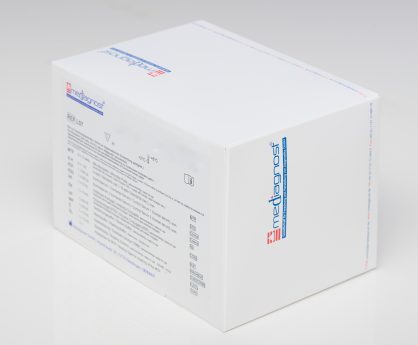ALS ELISA Assay Kit
The ALS ELISA Assay Kit is For Research Use Only
Size: 1×96 wells
Sensitivity: 0.53 ng/mL
Assay Range: 0.53 – 30,000 ng/mL
Incubation Time: 3 hours
Sample Type: Serum, Plasma
Sample Size: 10 ul
ALS (Acid Labile Subunit) ELISA is manufactured by Mediagnost
Assay Principle
The Eagle Biosciences ALS ELISA is a so-called Sandwich-Assay. It utilizes two specific and high affinity antibodies for this protein. These antibodies were created by immunization of rabbits with specific peptides as previously described by Khosravi and Stadler [16, 17].
The ALS in the sample binds to the immobilized first antibody on the microtiter plate. The biotinylated second anti-ALS-Antibody binds also to the immobilized ALS. In the following step the Streptavidin-POD-Conjugate binds to the biotinylated antibody and in the closing substrate reaction the turn of the colour will be catalysed, quantitatively depending on the ALS-level of the samples.
Initially the test system was calibrated against an internal serum standard and measurement results were expressed as Mediagnost mU/mL. After successful production of eukaryotic recombinant ALS the calibration was transferred to mass units (see Calibration / Traceability).
Additionally recombinant material was used to quantify the ALS content of the calibrators in mass units. Thorough analysis revealed that 1 mU ALS is equivalent to 5 ng ALS and all previous assay data describing the assay performance were accordingly transferred to ng/mL.
Related Products
GHBP ELISA Assay Kit
Vaspin ELISA Assay Kit
Chemerin ELISA Assay Kit



